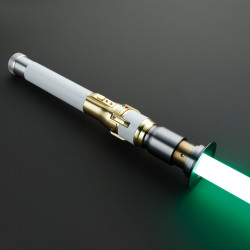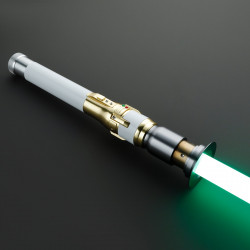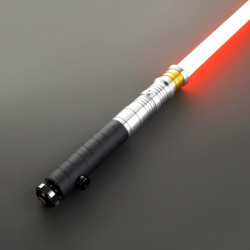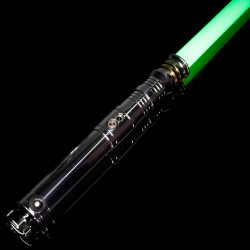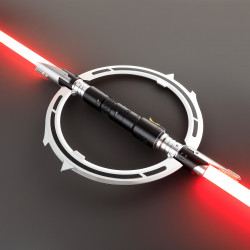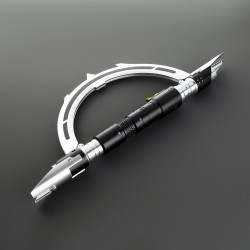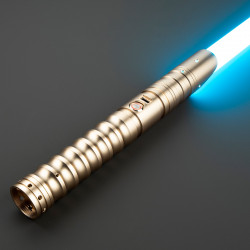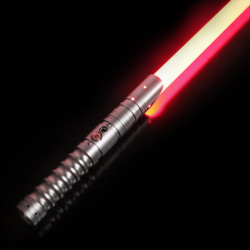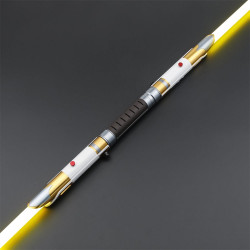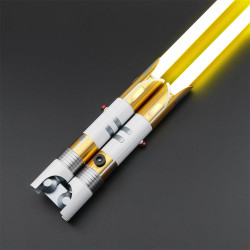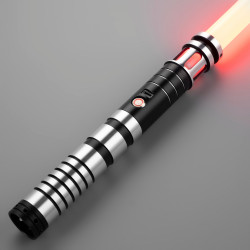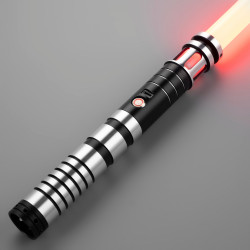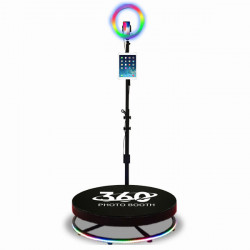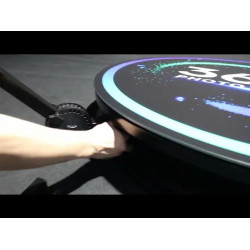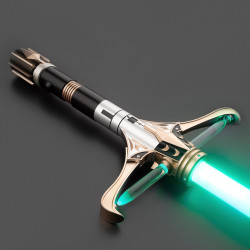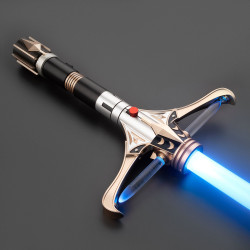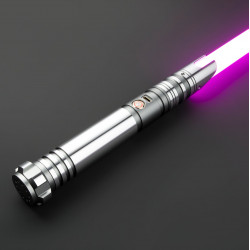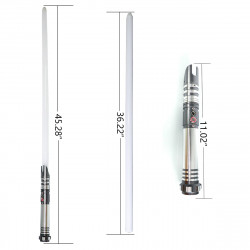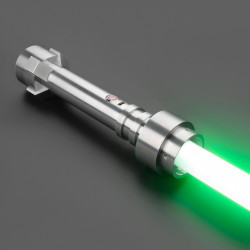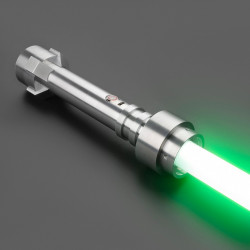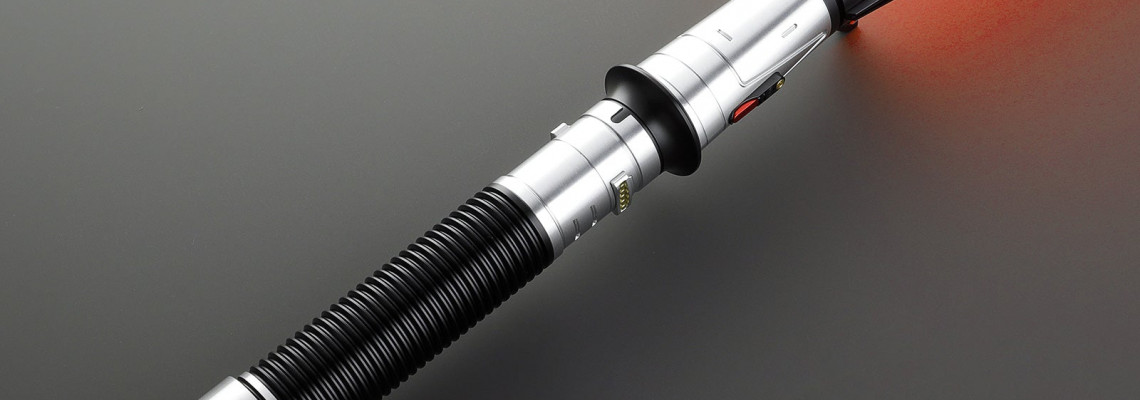
Vaapad Form VII Lightsaber Description, Analysis, and Fighting Style
Six lightsaber forms were created sequentially by the Jedi Order to make the best lightsaber form conceivable without limitations or disadvantages. There were seven lightsaber forms, and all six required the Light Side of the Force. These forms were by the Jedi code.
The shortcomings of these six lightsaber shapes made them insufficient. Lightsaber form vii was developed by the Jedi Order a millennium before the Battle of Yavin. In many ways, the seventh form differed from the other lightsaber forms. Not all aspects of this form adhered to the Jedi code of harmony and peace.
We will focus on lightsaber form vii, form vii users, and all other associated topics.
Lightsaber Form VII – Juyo & Vaapad
Juyo is sometimes referred to as the Ferocity form or the method of the Vornskr forms vii. In its early years, the Jedi Order made use of form vii. Later on, people started to view this form as malevolent. Form vii, a variant of the lightsaber, was created much later. Mace Windu, one of the final Jedi Masters of the Old Republic, produced this form. He named it Vaapad in honor of a Sarapin-planet resident. Let's examine each form in more depth.
Juyo Lightsaber Form
Form Vii's first iteration is called Juyo. This variety of lightsaber is considered to be the most vicious of all. Additionally, it is the lightsaber shape with the highest energy consumption. The combative variant is Juyo. It requires a laser-like offensive focus. It involves forceful attacks and straightforward movements.
Juyo uses excessive energy because this form depends more on feelings than motions. Juyo users let their emotions run wild without controlling them. According to Jedi Master Cin Drilling, Juyo was less evident than form IV, Ataru, yet it was just as offensive. He added that Juyo was also more dynamic than form V. Juyo is the most erratic of the seven lightsaber forms. This form's unpredictable nature is regarded as Juyo's most significant power.
Juyo can even negate Soresu users' defenses. It is also quite robust against adversaries who are armored and equipped.
Many Jedi Masters disliked this form despite its advantages. It was particularly unpopular with younger kids because of its complexity and range of emotions. Effective use of this lightsaber form was limited to Jedi masters who had mastered other forms.
This, as we know, is why the Jedi Order forbade Form vii. Juyo users needed to express their feelings. When they allowed their emotions to run wild, they were more likely to slip into the Dark Side. Many Jedi who used this form became downright violent throughout the wars. Killing an adversary brutally was against the Fallen Order of God. As a result, the Jedi Order prohibited the Juyo form.
Vaapad Lightsaber Form
The second variant of lightsaber form vii is called Vaapad. This form was developed a great deal later than its original form. This lightsaber form was designed by Mace Windu, a formidable Jedi Master, before the Clone Wars. He thought this one was the greatest of all the lightsaber forms.
Mace Windu and his fellow Jedi Master, Sora Bulq, developed this form for an excellent purpose. Sith Lords continued to use form vii despite the Jedi Order's prohibition on Jedi's utilizing the first variety. Juyo was a strong form that further benefited Dark Sider users. It was even called a "Sith Style" by Darth Sidious. It was the best lightsaber form, in his opinion.
Sora Bulq and Mace Windu altered this form to produce Vaapad to defeat Juyo. This variation was one of the best lightsaber forms and resembled a regulated version of Juyo. The best practitioner of this form was Sora Bulq, who also assisted Mace Windu in perfecting it. Despite letting his unpleasant emotions run their course, Mace Windu maintained control. He discovered how to use the Dark emotions to his advantage without succumbing to the Dark Side. Mace Windu became its master while remaining a Jedi, but its first practitioner, Sora Bulq, succumbed to the Dark Side.
Similar to Juyo, Vaapad depended more on its feelings than its moves. Vaapad was remarkable in one way. The Vaapad user could absorb the rage and anger of Dark Force users and channel it onto his adversary. The form vii users were able to save energy because of it. To gather enough Force energy for the fight, the user of Form Vii must constantly concentrate on his feelings.
Vaapad is an unpredictable form, just like Juyo. Vaapad seems to have unintelligible emotional energy and illegible attacks. Mace Windu gained notoriety for his "oblate sphere of purple fire" attack. His purple lightsaber was coming at rapid speed from every direction. Mace Windu derived this form derived this form from Vaapad's blade work.
Juyo & Vaapad Weaknesses (Form VII Weaknesses)
Form vii appears to be error-free. The Dark Side, which is strong, was needed for both of these forms. Even form vii, however, is not the ideal lightsaber form. Even this excellent lightsaber contains flaws, though they may not be very noticeable.
We know that Juyo can overcome even the most vigorous Soresu defense. It also works well against adversaries with armor due to its aggressive focus and ruthless power. However, according to the Jedi Order, Juyo is not a highly effective form against Force-based lightsaber attacks. Additionally, the Force powers were very victorious against Juyo.
Juyo practitioners may let their guards down because they concentrate too much on rage and aggressiveness. Soresu and other defensive forms work well against Juyo. A user of Soresu waits for a chance to attack after seeing a gap in the defense. Similarly, a Makashi user who effectively assaults Juyo with precision after spotting an opening is highly successful.
Vaapad form has all of these flaws as well. Vaapad and Juyo are essentially the same. The fact that Vaapad is a Jedi variation is the only distinction. Similar to how Sith lords use the Dark Force in Juyo, Jedi can also use it. Both of these variations have the same advantages and disadvantages.
Juyo & Vaapad Users
The Jedi Order prohibited Juyo in the past, so only Jedi's from those eras used this form. Several well-known Jedi masters, like Vrook Lamar, Zez-Kai Ell, and Kavar, were skilled in form vii, Juyo, during the Jedi Civil Wars.
Before the "rule of two," Kasim, the Sith blade master, taught at Sith Academy. He taught numerous Sith lords how to wield form vii and was a proficient Juyo master. Other well-known Juyo users from the past include Jedi Master Atris, Jaric Kaedan, Search Vaunk, Darth Bane, and Sith lord Scourge. These Juyo practitioners influenced the Juyo form and lived in various eras.
Darth Sidious utilized the Juyo form during the Clone Wars. It was also the lightsaber form of his apprentice, Darth Maul. Master Yoda acquired all of the lightsaber forms, including this one.
Many people, including Obi-Wan Kenobi, aspired to master the best lightsaber form when Mace Windu produced the other variety, Vaapad. Obi-Wan was forbidden by his instructor, Qui-Gon, to learn this form, which is extremely dangerous. Thus, Mace Windu and Sora Bulq are the only Vaapad users known to exist. When the Jedi Order was destroyed in the Clone Wars, Vaapad vanished, and nobody could find out.
FAQs
What is Vaapad Form VII?
Vaapad Form VII is a powerful, violent lightsaber fighting style that taps into intense feelings.
Who created Vaapad?
It is said that Mace Windu created the Vaapad lightsaber form.
Why is Vaapad considered dangerous?
Vaapad requires extraordinary self-control and is dangerous because it almost uses negative emotions.
Can any Jedi learn Vaapad?
Because of its complexity, Vaapad is only recommended for highly talented and intellectually disciplined Jedi.
What makes Vaapad different from other forms?
Vaapad stands out for its utilization of emotional depth and rapid, erratic movements.
Conclusion
Lightsaber combat in Vaapad form VII is sophisticated and violent. It is distinct and potent because it taps into intense emotions. Being on the dark side of the Force, this form necessitates a great deal of control and mental clarity. It can only be mastered by the most dedicated and talented Jedi without succumbing to its inherent dangers. Its dynamic nature makes Vaapad's fluid and unpredictable fighting style possible. In the Star Wars world, it represents the hazy boundary between good and evil.
